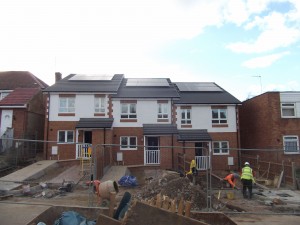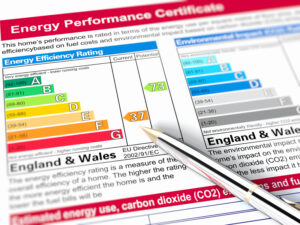In the second part of our technicals series, we look at the effect of Fuel Factors in SAP Calculations.
In Part 1 (Using Different Fuels in SAP) we explained how the target emissions will increase based on a fuel factor if you are using certain fuels such as electricity, LPG or oil.
|
Fuel |
Emissions kgCO2 per kWh |
Multiple of gas emissions |
Fuel Factor |
|
Mains Gas |
0.216 |
1.00x |
1.00 |
|
Electricity |
0.519 |
2.40x |
1.55 |
|
LPG |
0.241 |
1.12x |
1.06 |
|
Heating oil |
0.298 |
1.38x |
1.17 |
This fuel factor essentially helps you out by increasing the target emissions/TER. However, it doesn’t increase the emissions enough to fully compensate for the additional emissions from your fuel. The fuel factor is calculated as the square root of the ratio of the CO2 emission factor for the fuel to the emissions factor for mains gas.
Let’s look at electricity as an example for this.
The emissions of mains gas are 0.216 kgCO2 per kWh of gas delivered to site. The emissions of electricity are 0.519 kgCO2 per kWh, which is 2.40x higher than gas.
The fuel factor is calculated as the square root of 2.40, which equals 1.55.
Because of this square root relationship between the multiple of gas emissions and the fuel factor, it means that the fuel factor compensates a much larger proportion of the additional emissions for the fuels with lower additional emissions, such as LPG and heating oil.
Comparing Gas and Electric in SAP
Let’s look how changing between a gas heating system and an electric system will affect the TER and DER of a sample dwelling. When a gas system is specified:
- TER = 19.02 kgCO2/m2/year
- DER = 18.58 kgCO2/m2/year (passing by 2%)
When an electric system is specified (electric panels heaters for space heating and electric immersion boiler for hot water):
- TER = 27.86 kgCO2/m2/year
- DER = 34.42 kgCO2/m2/year (failing by 24%)
Changing to an electric heating system has:
- Increased the TER by 1.46x, because the heating related emissions have been increased by 1.55x
- Increased the DER by 1.85x, because the heating related emission have been increased by 2.40x
If electric heating is used, the dwelling would now need additional measures to pass, such as approximately 1.8kW of solar PV.
 It’s not just about carbon
It’s not just about carbon
It’s worth noting that electric heating also affects the SAP rating (also called the Energy Efficiency Rating on the EPC), which measures the energy related running costs of the dwelling. Electricity is more expensive than gas – SAP 2012 uses 13.19p/kWh for a standard electricity tariff and 3.48p/kWh for mains gas.
Below are the SAP/EER ratings for the different scenarios.
- Gas heating system – B 83
- Electric heating system before PV – D 66
- Electric heating system with PV – C 73
Therefore the gas-heated version is cheaper to run than the electric-heated version, even with the solar PV added.
Coming soon in our SAP Technicals series – How to Pass with Electric Heating.
